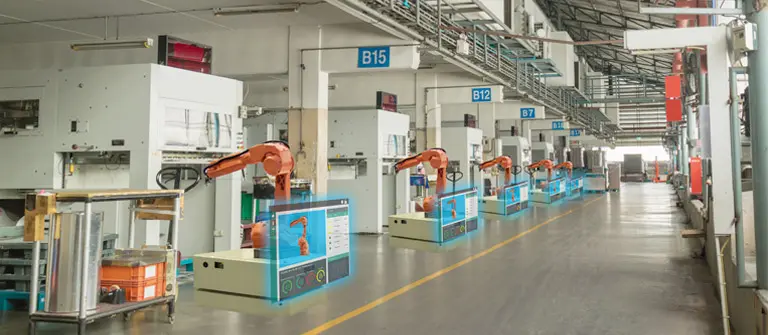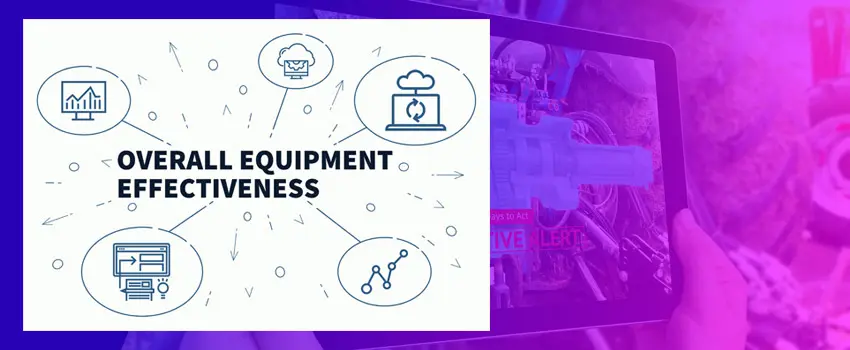
15 Mar Improving OEE with Predictive Manufacturing
Overall Equipment Effectiveness (OEE) is a tier-1 key performance indicator (KPI) within the manufacturing and industrial automation sectors. A common reality is that manufacturing equipment typically operates at sub-optimized levels of efficiency. Improving OEE performance has been one of the biggest challenges for companies trying to fully transition into an industry 4.0 manufacturing state.
OEE – What it is, What it measures, It’s Impact
OEE is a measure of how well a piece of equipment (or a complete ecosystem of machines) is performing compared to its full operating potential. It is used to determine the percentage of manufacturing time that is truly productive. Poor OEE performance impacts productivity, competitiveness, and profitability.
There are several ways to calculate OEE. One of the most straightforward would be as follows:
OEE = Availability x Performance x Quality
An example:
Availability: A machine was scheduled to run for 8 hours but only ran for 7. 7/8 = 87.5%.
Performance: A machine has an optimum output of 5,000 units during an 8-hour shift but only produces 4,400. 4400/5000 = 88.0%
Quality: The machine produced 4,400 units during the 8-hour shift but only 4,100 of them passed quality inspection. 4200/4400 = 93.2%
In the above example the calculated OEE would be 0.875 x 0.88 x 0.932 = 0.72 (72%).
Many enterprises have been operating at OEE levels of 65 – 70% over the past couple of decades. That has enabled a transition from a purely reactive manufacturing environment to one that is more planned. The next threshold will be predictive manufacturing that produces OEE performances of 85 -90%. This 15 – 20% improvement will only be possible via integration of new Edge-native AI technologies that bring artificial intelligence (AI) and machine learning (ML) to the industrial equipment endpoints.
Low OEE – the Causes
Poor OEE performance creates several operational and business disadvantages for any operation that depends on getting optimal performance from their machines and devices. Low OEE scores can be the result of many interconnected problems, including:
- Excess machine downtime: Critical assets are taken offline due to breakdown, sluggish performance, or unnecessary maintenance. This is often the result of a lack of intimate, real-time, insight into machine health.
- Product quality: The quality of the product(s) being produced is one of the components within an OEE calculation. Machines that produce sub-spec products will impact OEE performance.
- Short asset lifespans: Non-optimized asset lifecycle management shortens the operational life of assets. Production output is degraded while replacement machines are procured and installed.
- Process control limitations: Equipment that is too dependent on manual processes and/or human intervention will not reach optimum performance. Manual processes and humans are prone to error.
Closing the OEE Gap
New Edge-native AI technologies are powering many developments within Industry 4.0. One of the most impactful will be the transition to predictive manufacturing. Manufacturers will be able to utilize Endpoint AI and ML solutions to reach levels of OEE that just a few years ago seem unattainable. This will be accomplished via the embedding of AI algorithms directly into the endpoints (MCUs) of machines, devices and processes.
Predictive manufacturing—powered by Edge-native AI—will close the OEE performance gap by….
- Transforming machines and devices from human-managed to self-managed entities
- Providing early detection of performance anomalies
- Providing real-time insights on potential failure and/or sub-par performance
- Enabling self-learning algorithms that provide live heath score updates
- Using asset-specific heath data to develop “Days to Maintenance” (i.e., predictive maintenance) intelligence
- All the above provided within a single point of command and control
Improved OEE- the Consequences
Is it worth it? Is improving OEE performance via transition to a predictive manufacturing state worth the investment? Will the ROI be justifiable? The short answer to all these questions is a resounding “yes”! Consider these advantages:
- A typical manufacturing operation has an average OEE of ~70%. Edge-native AI predictive manufacturing can improve OEE to ~ 85%.
- A 15% improvement in OEE can equate to a 17% increase in productivity. An operation producing $60M worth of products can increase their output to ~ $70M.
- Improved OEE equates directly to a reduction in asset maintenance costs. Unnecessary maintenance is eliminated via the implementation of predictive maintenance.
- Higher OEE scores translate to improved quality of the products being produced. Machine and device performance are more reliable and more predictable.
- Production costs are reduced. This results in improved product pricing as well as healthier bottom lines.
- OEE scores of 85% or better indicate a high level of predictability across the entire enterprise. This has positive implications for the entire company.
- All the above contribute to produce a great ROI. The payback on investment in predictive manufacturing capability will be quick and stable.
Predictive manufacturing will enable asset-intensive industries to break the 75% OEE barrier. For those that invest in these Edge-native AI technologies the payoffs will be profound and far-reaching. Those that fail to capitalize on these advancements will likely find it difficult to remain competitive.



